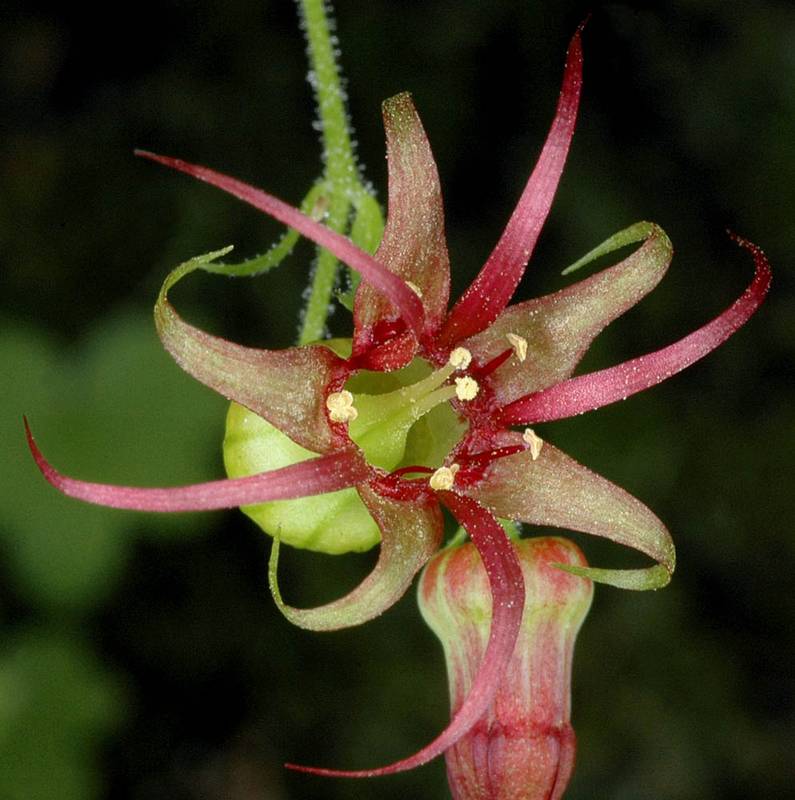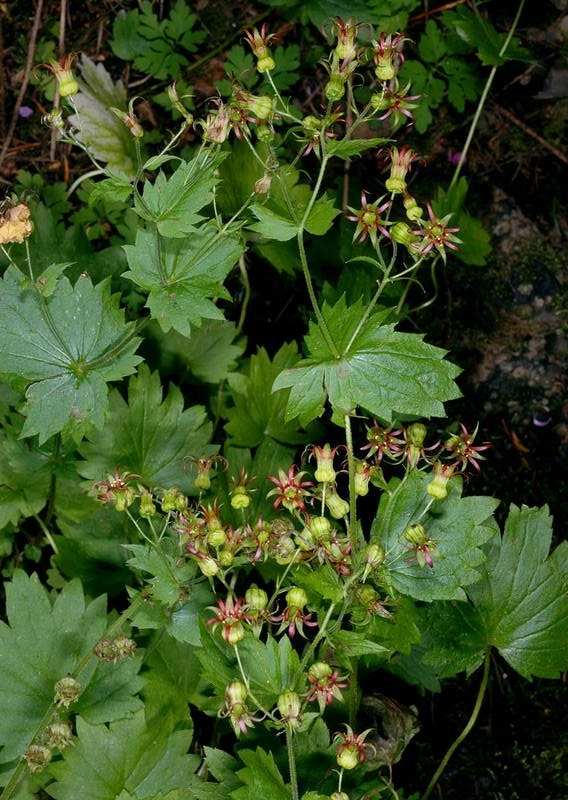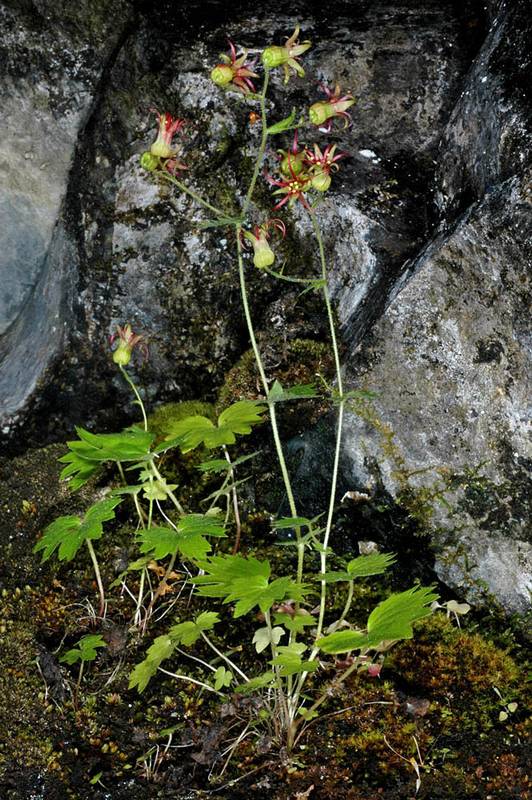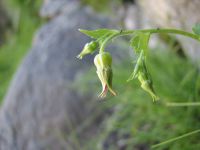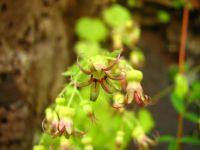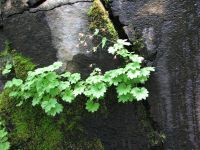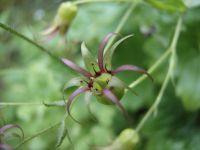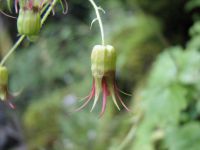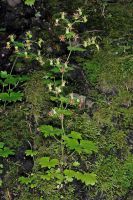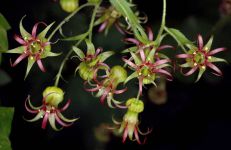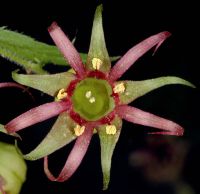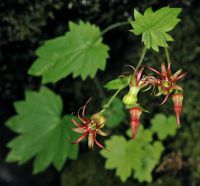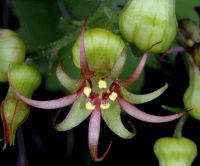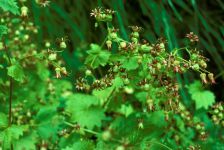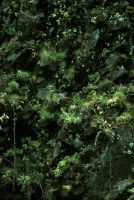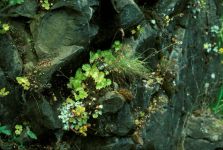Distribution: Occurring in the Columbia River Gorge and in southeastern Washington; southern Washington to adjacent Oregon, east to Idaho.
Habitat: Moist, mossy rocks, usually near waterfalls.
Flowers: May-June
Origin: Native
Growth Duration: Perennial
Conservation Status: Threatened in Washington (WANHP)
Weakly glandular-pubescent, herbaceous perennial with numerous bulblets along the short rhizome, the usually single stem 2-4 dm. tall.
Basal and lower cauline leaves long-petiolate, reniform, 3-7 cm. broad, shallowly lobed, the lobes with irregular, pointed teeth; the upper leaves with short petioles; the stipules leaf-like.
Flowers few in an open, conspicuously bracteate, terminal panicle; calyx 14-18 mm. long, the 5 lobes linear-lanceolate, purplish, equaling the tube; the 5 petals purplish, linear, about equaling the calyx lobes; stamens 1/3 as long as the petals, the filaments reddish-purple.
Capsule 1 cm. long, the 2 carpels fused + their length.
Publication: Proc. Amer. Acad. Arts. 14: 292. 1879.
PNW Herbaria: Specimen records of Bolandra oregana in the Consortium of Pacific Northwest Herbaria database
WA Flora Checklist: Bolandra oregana checklist entry
OregonFlora: Bolandra oregana information
E-Flora BC: Bolandra oregana atlas page
CalPhotos: Bolandra oregana photos

